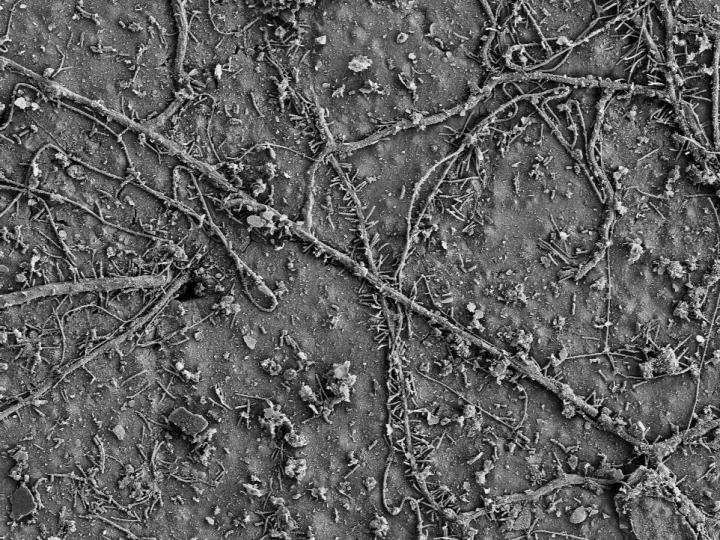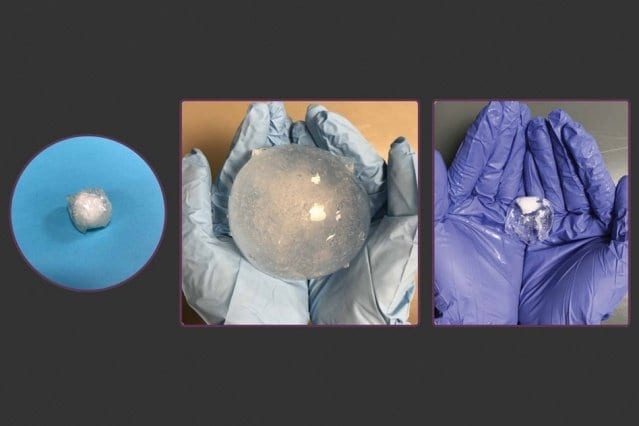
One of the most successful plastics is polyethylene terephthalate (PET), the material we use to make bottles and fibres for clothing. However, PET is made from petroleum-based building blocks. An alternative to PET can be made from bio-based furan molecules, but to polymerize these furans you need toxic catalysts and high temperatures. Now, polymer chemists from the University of Groningen, led by Prof. Katja Loos, have described an enzyme-based polymerization method.
Their results were published in the journal ChemSusChem on 29 January.
PET is used to make fizzy drink bottles because it has excellent barrier properties, which keeps the fizz inside. ‘But furan-based polymers are a good alternative’, says Prof. Katja Loos. Furans, which are characterized by an aromatic ring with four carbon and one oxygen atom, can be made from biomass-derived sugars, and polymerized into Polyethylene 2,5-furandicarboxylate (PEF). Other copolyesters can be created from furans as well, resulting in plastics with different properties.
Equilibrium
‘Furans are mainly produced with enzymes. But for the polymerization, the same processes are used as have been used for PET production for the last 70 years’, says Loos. Toxic metal-based catalysts and high temperatures that are needed for this process mean that it is not very environmentally friendly.
That is why Loos and her colleagues looked for an alternative polymerization method, one that uses enzymes. ‘We eventually found a commercially available enzyme that would do this’, says Loos. The polymers are made by combining furans with linear monomers, either aliphatic diols or diacidic ethyl esters. The enzyme Candida antarctica lipase B (CALB) is a lipase that breaks down ester bonds, but the polymerization requires the creation of these bonds. This may seem counter-intuitive, but it is not, explains Loos: ‘Enzymes catalyze equilibrium reactions, and we simply pushed the equilibrium towards the formation of ester bonds.’
In their paper, the scientists describe how CALB and a number of furans and linear monomers are used to form different copolyesters. They succeeded in increasing the content of aromatic units in the polyester to a point that exceeds the properties of PET. The enzymatic polymerization therefore appears to be a viable alternative to the current catalytic polymerization. ‘In our experiments, we used ether as a solvent, which you don’t want in a factory setting. But as the melting point of furans is quite low, we are confident that enzymatic polymerization will work in liquid monomers as well’, says Loos.
Green alternatives
As the CALB enzyme is commercially available, it is surprising that no one had used it before to avoid the process of toxic catalysts and high temperatures. The only explanation that Loos can offer is that most polyester production lines are geared to using these classical reactions, rather than the enzymatic alternative. And changing a production line is expensive. ‘However, our enzymatic polymerization process would be ideal for new companies working on green alternatives to PET.’
Learn more: Green alternative to PET could be even greener
The Latest on: Enzymatic polymerization
[google_news title=”” keyword=”enzymatic polymerization” num_posts=”10″ blurb_length=”0″ show_thumb=”left”]
via Google News
The Latest on: Enzymatic polymerization
- Revolutionizing Recycling: New Advances in Polyester Depolymerizationon May 6, 2024 at 5:54 am
Innovative depolymerization methods enhance PET and polyester recycling, promising a sustainable future in waste management.
- 5 Ways to Use Papainon April 30, 2024 at 5:00 pm
Papain is an enzyme found in papaya, but it’s also available in other forms. Limited research suggests it may offer some health benefits, like improved digestion. Papain is a proteolytic enzyme ...
- Top 5 Best Enzyme Supplements in 2024on April 23, 2024 at 5:00 pm
Enzyme supplements could potentially offer a solution for these kinds of issues. Enzyme supplements are designed to aid in the digestion of food, making it easier for the body to absorb nutrients.
- Enzyme forms complexes with fractal geometrieson April 23, 2024 at 5:00 pm
Researchers have identified an enzyme that can assemble into complexes with fractal geometries. Fractals—hierarchical patterns in which structural features at larger scales repeat at smaller ...
- What to know about cardiac enzymes (cardiac biomarkers)on April 21, 2024 at 5:00 pm
Elevated cardiac enzyme levels indicate when someone has experienced a heart attack. A cardiac enzyme test can measure the amount of cardiac enzymes in a person’s blood. Certain enzymes are ...
- Top 9 Best Digestive Enzyme Supplements in 2024on April 16, 2024 at 5:01 pm
The importance of a healthy gut for overall well-being cannot be overstated, made evident by the rising popularity of digestive enzyme supplements. These supplements include a critical mix of ...
- Gordon Ramsay's Top Tip For Prepping Vibrant Avocadoson December 20, 2023 at 3:30 am
In avocados, a phenol called polyphenol oxidase is an enzyme that, when exposed to oxygen ... The citric acid in many citrus juices makes the polymerization that causes browning to happen more slowly.
- Enzymes: Moving at the Speed of Lifeon January 13, 2023 at 7:10 pm
Each enzyme molecule has a special place called the active site where another molecule, called the substrate, fits. The substrate goes through a chemical reaction and changes into a new molecule ...
- Research Resultson July 4, 2021 at 5:20 pm
Professor Iwata Tadahisa et al. of the University of Tokyo have developed an innovative high performance bioplastics from various polysaccharides obtained from natural biomass or by enzymatic ...
- Chromatrap® Enzymatic 96on April 4, 2020 at 7:13 am
The kit contains 96 Protein-A or Protein-G based filters in one SLAS/ANSI standard microplate footprint device, along with sufficient buffers and reagents for enzymatic shearing of chromatin and ...
via Bing News










